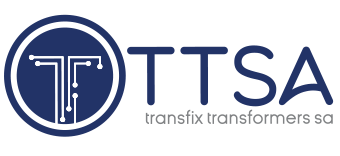Law firm Norton Rose Fulbright will participate at this year’s Africa Energy Indaba as a partner, providing a legal perspective on energy sector laws. The global law firm provides a business law service, with an industry focus throughout major key industries, including the energy industry.
Forestry, Fisheries and the Environment Minister Barbara Creecy has welcomed the announcement by Finance Minister Enoch Godongwana that government plans to progressively increase the carbon price every year to reach $20/t of carbon dioxide equivalent (CO2e) by 2026, $30/t of CO2e by 2030 and $120/t of CO2e by 2050. “This policy trajectory for the carbon tax really will be very helpful in allowing us to achieve the Nationally Determined Contribution that we submitted for 2025 and 2030 to the United Nations in October last year,” she noted.
The National Energy Regulator of South Africa (Nersa) announced on Thursday that Eskom’s tariff would rise by 9.61% on April 1, an increase that is less than half the 20.5% hike for which Eskom had applied. The tariff decision includes allowable revenue of R250-billion, against the R293-billion for which Eskom applied, which translates to a sub-inflation increase in the retail tariff of 3.49%.
South Africa’s government intends making it mandatory for all metal traders to get licenses and prevent them from dealing in cash, a measure aimed at combating a massive illegal trade in cables and wiring stripped from rail, power and telecommunication lines. Traders will also be required to conduct due diligence on their customers and track the origins of their products, the National Treasury said in the annual budget review, which was published in Cape Town on Wednesday.
South Africa is looking to build out funding opportunities and partnerships with international donors and countries that are aiming to decarbonise their own economies through the use of green hydrogen, Department of Science and Innovation (DSI) hydrogen and energy chief director Rebecca Maserumule said this week. In an address at the Energy & Mines virtual summit, on February 23, she outlined the highlights of South Africa’s newly released Hydrogen Society Roadmap, which was unveiled by Higher Education, Science and Innovation Minister Blade Nzimande earlier in the month.
The Nuclear Industry Association of South Africa (Niasa) has confirmed that it will co-host a nuclear conference next month. Called the Nuclear Technology Imbizo 2022, the conference’s other co-hosts will be the South African Young Nuclear Professionals Society, Women in Nuclear South Africa, and the Southern African Radiation Protection Society. The Imbizo will be held at the Cape Town International Conference Centre and take place on March 16 and March 17. The association highlighted that South Africa had suffered from “massive loadshedding” (power cuts or outages) imposed by the State-owned national electricity utility Eskom over the past couple of years, including during this year already. Most of the breakdowns that triggered this loadshedding had occurred and were occurring in the utility’s fleet of coal-fired power stations. Further, under the Integrated Resource Plan 2019, 11 500 MW of this coal capacity would have to be decommissioned from 2030 on.
South Africa needs to undertake six measures to improve its energy and electricity security and sustainability, as well as ensure it can meet ongoing electricity demand, FutureEnergy CEO Andy Calitz said on February 23.
Speaking at a webinar on South Africa’s Energy Transition Journey, hosted by EE Business Intelligence, he said that ending load-shedding was “more important than achieving net-zero emissions”.
Finance Minister Enoch Godongwana confirmed that Eskom will receive a further R88-billion in government support until 2025/26 and that a comprehensive debt solution was still being explored for the financially unsustainable State-owned electricity producer. The support comes in addition to the R136-billion already provided or committed to enable the utility to pay back its debt, which currently stands at close to R400-billion.
A government study is currently under way to explore alternative support for the Renewable Energy Independent Power Producer Procurement Programme (REIPPPP), the National Treasure states in its 2022 Budget Review. “This is expected to result in a reduction or elimination of guarantee requirements for the programme, reducing the stock of contingent liabilities,” the documents adds, while stressing that contingent liability risks for independent power producers (IPPs) represents a low risk to the fiscus.
The 22 ha solar photovoltaic plant at gold producer Iamgold’s Essakane mine, in Burkina Faso, produces 25 000 MWh/y of electricity, while also reducing carbon dioxide equivalent emissions by 16.5 t, eliminating 5.5-million litres of fuel use a year and 120 fuel delivery trucks a year to sustain the mine’s 400 000 oz/y of production, Essakane GM Mohamed Ourriban has said. “The inflation in logistics costs has added another advantage arising from our use of clean, renewable energy on site,” he notes.
INDUSTRY NEWS
WHERE TO FIND US
Address
9 Yellow Street
Botshabelo Industrial Area
Botshabelo, Free State
Call / Email Us
Tel: +27 (0) 61 956 6772
Email: info@transfix.co.za
